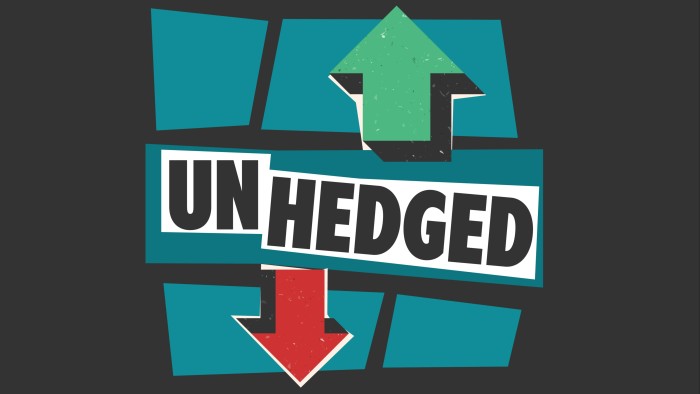This article is an on-site version of our Unhedged newsletter. Premium subscribers can sign up here to get the newsletter delivered every weekday. Standard subscribers can upgrade to Premium here, or explore all FT newsletters
Good morning. The moderate Christian Democrats (CDU/CSU) won in the German election yesterday, while the far-right Alternative for Germany (AfD) party came in second, and got its highest ever vote share. It’s a major shift right, and a particularly anti-US one; after his party’s victory was announced, CDU/CSU leader Friedrich Merz promised to “achieve independence” from the US. The Euro appreciated ever so slightly against the dollar on the news. Email me: aiden.reiter@ft.com.
Sentiment and stagflation
The S&P 500 fell 1.7 per cent on Friday. A fall of less than 2 per cent is not, by itself, cause for alarm. It was, however, the market’s biggest dip since December when the Fed signalled it was on hold — even bigger than the market’s wobble when DeepSeek shifted the AI narrative.

The fall had a particularly bearish tone. Defensives dominated cyclicals. Only consumer staples were up at the end of the day:

But, unlike the fall after the Fed cut or the DeepSeek shock, there was not one clear cause. Instead, this came from a build-up of mediocre-to-negative data.
On Friday, we got preliminary PMI survey readings showing that US business growth is close to stalling. Services contracted for the first time in more than two years, offsetting a modest pick-up in manufacturing. But that pick-up in manufacturing may be short-lived: manufacturing new orders were down, caused in part by a steep fall in export orders. We also got negative housing data throughout the week. New housing starts and existing home sales were down by a lot, and mortgage applications were down by a little.
The straw that broke the camel’s back was the Michigan consumer sentiment survey, also out on Friday. It was overwhelmingly negative. The headline reading fell by 9 per cent, the second consecutive drop and its biggest fall since a string of hot inflation prints last April. The fall was widespread, covering all indicators and all age groups, income brackets, and wealth levels.

Together, falling sentiment, a weakening housing market, and contracting business activity suggest that the hot US economy may be cooling faster than previously thought — a far cry from the hot growth many analysts expected from Donald Trump’s policies. Friday’s market reaction looks like investors starting to unwind those expectations.
Declining growth, while not exactly good, is not all bad. Inflation remains above target; slower business activity and a weaker consumer would help lower prices. Break-even inflation, a gauge of the market’s inflation expectations, fell across maturities on Friday:

It is also possible that the market is responding to the possibility of a much worse scenario: stagflation.
Buried in last week’s economic data was clear concern about effect of tariffs on prices. Manufacturers responding to the PMI survey reported higher costs for raw materials, which they “overwhelmingly blamed . . . [on] tariffs and related supplier-driven price hikes”, according to the release. The consumer sentiment survey also showed mounting fears over what trade duties could mean for the consumer basket. The largest drop across the survey was a 19 per cent plunge in buying conditions for consumer durables, which survey publisher Joanne Hsu of the University of Michigan contributed directly to “fears that tariff-induced prices increases are imminent”. And both year-ahead inflation and long-term inflation expectations jumped across age groups and income levels — though they fell slightly for Republicans, while increasing among Independents and Democrats.
On the employment side, things are currently fine — but expected to get worse. The number of Americans filing unemployment claims ticked up slightly last week, in line with a recent choppy trend:

But we are still waiting for the employees and contractors trimmed from the federal budget by Elon Musk and Doge to show up in the data. According to Torsten Slok, chief economist at Apollo, Doge’s efforts could put as many as 1mn people into the job market — a 15 per cent increase to the current level of unemployment. As Slok notes, that “is likely to have consequences for rates, equities, and credit,” and prove a bigger weight on slowing growth.
The market has still not fully reacted to Trump’s tariff proposals or Doge’s actions, perhaps for good reason. We still do not know how tariffs will play out, and we still do not know the full implications of Musk’s cutting. But if slow growth, higher prices, and rising unemployment come together and we do enter a period of stagnation, the market is certain to react. As we noted after the Fed’s boring January meeting, monetary policy, for now, is a sideshow. The risks lie on the fiscal side. Will a sharp market reaction restrain the president? The market may depend on it.
One good read
Kalashnikovs and limousines.
FT Unhedged podcast

Can’t get enough of Unhedged? Listen to our new podcast, for a 15-minute dive into the latest markets news and financial headlines, twice a week. Catch up on past editions of the newsletter here.
Recommended newsletters for you
Due Diligence — Top stories from the world of corporate finance. Sign up here
Free Lunch — Your guide to the global economic policy debate. Sign up here





